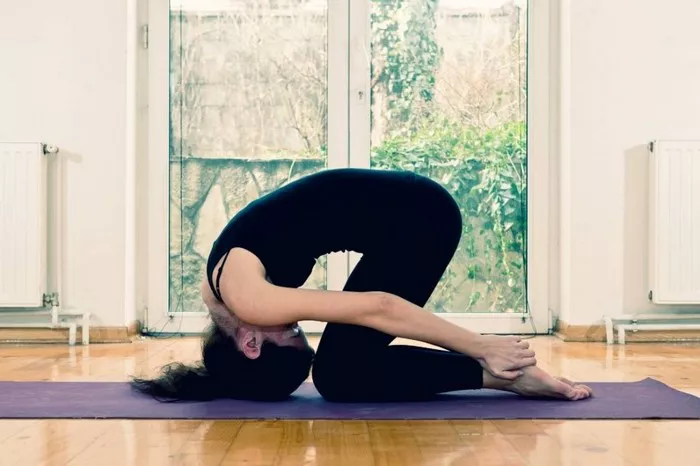In the evolving world of wellness and fitness, yoga continues to be a cornerstone for improving flexibility, strength, and mental clarity. Among the various tools and accessories that complement yoga practice, Yoga Tune Up® balls have gained significant attention for their unique ability to support self-myofascial release, pain relief, and overall body tuning. Whether you are a seasoned yogi or a beginner exploring ways to enhance your practice, understanding what Yoga Tune Up balls are, how they work, and their benefits can be a valuable addition to your wellness toolkit.
This guide aims to provide a clear, professional, yet easy-to-understand explanation of Yoga Tune Up balls, exploring their origin, design, applications, and benefits, as well as practical tips on incorporating them into your routine.
1. Introduction to Yoga Tune Up Balls
What Are Yoga Tune Up Balls?
Yoga Tune Up balls, often called YTU balls, are small, firm, textured balls designed to massage and release tension in the muscles and fascia (the connective tissue surrounding muscles). Typically made from high-quality, dense rubber, these balls are about the size of a tennis ball or slightly smaller, making them easy to handle and maneuver over different parts of the body.
Unlike traditional massage tools, Yoga Tune Up balls are specifically engineered to allow self-applied myofascial release—meaning you can use them to roll over sore or tight muscles, gently breaking down knots and adhesions to restore better mobility and function.
The Origin and Philosophy Behind Yoga Tune Up®
The Yoga Tune Up® method was developed by Jill Miller, a yoga teacher and bodywork practitioner, who combined her knowledge of anatomy, yoga, and self-myofascial release to create a system aimed at “tuning up” the body. Her goal was to help people understand their own anatomy better and empower them to take charge of their physical health through targeted exercises and self-care techniques.
Yoga Tune Up balls are a central element of this method. They are not just massage tools but also instruments to improve proprioception (the body’s awareness of itself in space), promote joint health, and support muscular balance.
2. The Science Behind Yoga Tune Up Balls
Understanding Fascia and Myofascial Release
To fully appreciate the benefits of Yoga Tune Up balls, it’s important to understand fascia and why myofascial release matters.
Fascia is a network of connective tissue that surrounds muscles, bones, nerves, and organs, providing structural support and transmitting force throughout the body. When fascia becomes tight, sticky, or restricted due to injury, poor posture, or overuse, it can lead to pain, reduced mobility, and dysfunctional movement patterns.
Myofascial release is a technique that applies gentle sustained pressure into the myofascial connective tissue restrictions to eliminate pain and restore motion. Using tools like Yoga Tune Up balls helps simulate this pressure through targeted rolling and compression.
How Yoga Tune Up Balls Work
When you roll a Yoga Tune Up ball over tight muscles, it compresses the underlying fascia, helping to:
- Break up adhesions and knots in the muscle tissue
- Increase blood flow and oxygen to the area
- Stimulate nerve endings that can reduce pain signals
- Improve joint range of motion by releasing restrictions around the muscles and fascia
This combination of effects helps reduce soreness, improve flexibility, and enhance overall movement quality.
3. Design and Types of Yoga Tune Up Balls
Design Features
Yoga Tune Up balls are typically about 2.5 inches (6.35 cm) in diameter, roughly the size of a lacrosse ball or slightly larger than a tennis ball. They are made from firm, dense rubber that holds its shape under pressure but is still slightly pliable to conform to body contours.
The surface often has a textured pattern—small bumps or ridges—that enhances grip and provides a more stimulating massage experience compared to smooth balls.
Variations and Related Tools
- Single Yoga Tune Up Ball: Ideal for targeting specific muscle groups and spots, such as the shoulders, feet, or hips.
- Peanut-Shaped Balls: Two balls connected together resembling a peanut shape, used to work along the spine or larger muscle groups.
- Larger or Softer Versions: Some companies produce softer or larger versions of myofascial release balls, but traditional Yoga Tune Up balls are dense and firm for deeper release.
4. Benefits of Using Yoga Tune Up Balls
Yoga Tune Up balls offer a broad spectrum of benefits for the body and mind, making them useful for a variety of practitioners—from athletes to office workers.
Physical Benefits
- Improved Muscle Flexibility and Mobility: By releasing tightness in muscles and fascia, these balls help increase your overall range of motion.
- Reduced Muscle Soreness and Pain: Rolling with the balls promotes circulation and nerve stimulation, which can alleviate chronic pain and post-workout soreness.
- Enhanced Joint Health: Improved muscle function and fascia mobility can contribute to better joint alignment and less strain.
- Injury Prevention: Regular myofascial release helps identify and address muscle imbalances before they lead to injury.
- Better Posture and Movement Patterns: Addressing fascial restrictions can improve overall body mechanics, making movements more efficient and reducing strain on vulnerable areas.
Mental and Emotional Benefits
- Stress Reduction: The tactile and sensory stimulation from using the balls can trigger relaxation responses in the nervous system.
- Mind-Body Awareness: Using Yoga Tune Up balls encourages mindfulness and better proprioception, improving body awareness.
- Empowerment: Taking an active role in your body care fosters a sense of control over physical wellbeing.
5. How to Use Yoga Tune Up Balls: Practical Guide
Getting Started
Before beginning, find a comfortable, safe space where you can lie or sit down with enough room to move freely. Wear comfortable clothing that allows access to the muscles you want to target.
Basic Techniques
1. Rolling
- Place the ball under a tight muscle (e.g., calf, shoulder, or glute).
- Slowly move your body to roll the ball along the muscle fibers.
- Pause and hold pressure on tender spots or “knots” for 20-30 seconds.
- Breathe deeply and relax into the sensation to encourage release.
2. Compression and Isometric Holds
- Apply steady pressure with the ball on a trigger point.
- Hold this pressure while engaging the muscle gently (isometric contraction).
- Release slowly and repeat to promote deeper tissue relaxation.
Common Areas to Target
- Feet: Rolling under the arches helps alleviate plantar fasciitis and foot fatigue.
- Calves and Shins: Helps with shin splints and calf tightness.
- Lower Back: Using the peanut-shaped balls can target paraspinal muscles.
- Shoulders and Neck: Relieves tension caused by prolonged sitting or screen time.
- Glutes and Hips: Helps release tightness affecting lower back and posture.
Safety Tips
- Avoid rolling directly on bones or joints.
- Start gently and increase pressure gradually.
- If you experience sharp or intense pain, stop and consult a healthcare professional.
- Combine use with stretching and strengthening exercises for best results.
6. Integrating Yoga Tune Up Balls into Your Yoga Practice
Yoga Tune Up balls can complement any style of yoga, from gentle restorative practices to more vigorous flow styles.
- Pre-Practice Warm-Up: Use the balls to prepare muscles for movement by releasing tight areas.
- Post-Practice Recovery: Target sore muscles after your session to reduce stiffness and speed recovery.
- Restorative Yoga: Incorporate balls during poses like supported twists or hip openers for added release.
- Self-Massage Breaks: Use during meditation or breaks to relax the body and calm the mind.
7. Who Can Benefit from Yoga Tune Up Balls?
Yoga Tune Up balls are versatile and suitable for almost everyone:
- Athletes and Active Individuals: To enhance recovery and prevent injury.
- Office Workers: To relieve muscle tightness from prolonged sitting.
- Older Adults: To maintain mobility and reduce stiffness.
- Yoga Practitioners: To deepen their practice and body awareness.
- Physical Therapy Patients: Under guidance, for rehabilitation and pain relief.
8. Scientific Evidence and Expert Opinions
Several studies support the effectiveness of myofascial release techniques for improving range of motion, reducing pain, and enhancing muscle recovery. While specific research on Yoga Tune Up balls may be limited, the principles align with broader myofascial release research.
Experts in physical therapy, sports medicine, and yoga often recommend incorporating self-myofascial release tools like these balls as part of a holistic approach to movement and pain management.
9. FAQs
Q: How often should I use Yoga Tune Up balls?
A: Daily use is beneficial for maintenance, especially after workouts or long periods of inactivity. Even 5–10 minutes can make a difference.
Q: Can Yoga Tune Up balls replace professional massage?
A: They are a helpful supplement but do not replace the skill and depth of professional manual therapy.
Q: Are there any contraindications?
A: Avoid use if you have open wounds, fractures, severe osteoporosis, or certain medical conditions without consulting a healthcare provider.
Conclusion
Yoga Tune Up balls are simple yet powerful tools designed to enhance your body’s natural ability to heal, move freely, and perform optimally. By incorporating these balls into your yoga practice or daily routine, you can experience greater muscle flexibility, reduced pain, improved joint health, and enhanced mind-body awareness.
Their ease of use and portability make them accessible to people of all fitness levels and lifestyles. With consistent practice and mindful application, Yoga Tune Up balls can truly help you tune up your body, alleviate discomfort, and enjoy the full benefits of your yoga journey and beyond.
Related Topics:
























